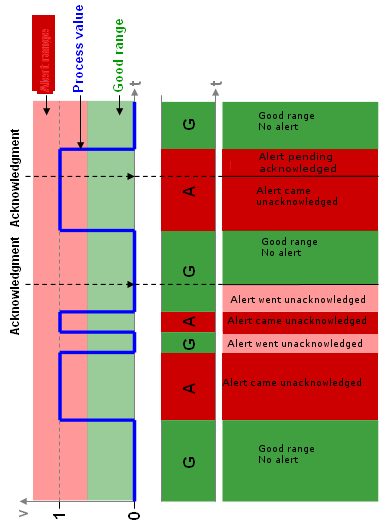Alert States and Acknowledgement
Alert show the user unusual or dangerous states of a plant. Usually the user has to notice states of a specific priority. Such an acknowledgement will mostly be saved including the access data of the acknowledging user.
The alert handling of an alert range can have different states in the course of time. Depending on whether the alert state is pending or not and whether the user has noticed it, alert states are distinguished.

You can find further examples with continuous and discrete alert handling in the chapter Examples of alarm handling.
The necessity of an acknowledgement depends on the requirement for security. It may be necessary to acknowledge either the incoming or the outgoing alarm event, both of them or none at all.

Basically, all alarms that are visualized together in the currently displayed process image, can be acknowledged together. In WinCC OA this is called "Common confirm" or "Acknowledge all". Additionally, individual acknowledgements might be necessary for specific alarms. You can define this in the alarm class.
For more information on the configuration of alarm handlings and alarms, see chapters _alert_hdl (alarm handling) and _alert_class (alarm class).



